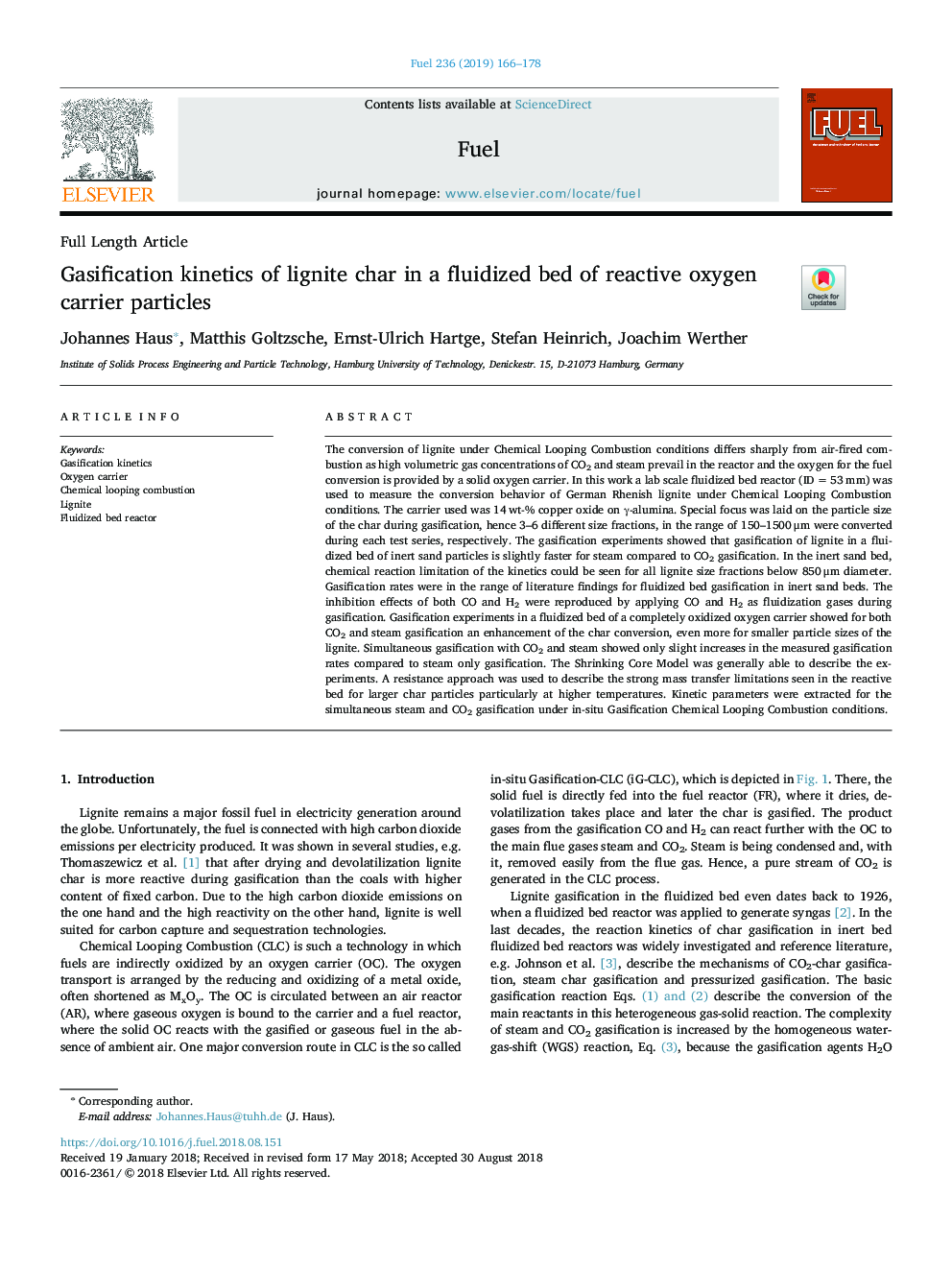| Article ID | Journal | Published Year | Pages | File Type |
|---|---|---|---|---|
| 10145371 | Fuel | 2019 | 13 Pages |
Abstract
The conversion of lignite under Chemical Looping Combustion conditions differs sharply from air-fired combustion as high volumetric gas concentrations of CO2 and steam prevail in the reactor and the oxygen for the fuel conversion is provided by a solid oxygen carrier. In this work a lab scale fluidized bed reactor (IDâ¯=â¯53â¯mm) was used to measure the conversion behavior of German Rhenish lignite under Chemical Looping Combustion conditions. The carrier used was 14â¯wt-% copper oxide on γ-alumina. Special focus was laid on the particle size of the char during gasification, hence 3-6 different size fractions, in the range of 150-1500â¯Î¼m were converted during each test series, respectively. The gasification experiments showed that gasification of lignite in a fluidized bed of inert sand particles is slightly faster for steam compared to CO2 gasification. In the inert sand bed, chemical reaction limitation of the kinetics could be seen for all lignite size fractions below 850â¯Î¼m diameter. Gasification rates were in the range of literature findings for fluidized bed gasification in inert sand beds. The inhibition effects of both CO and H2 were reproduced by applying CO and H2 as fluidization gases during gasification. Gasification experiments in a fluidized bed of a completely oxidized oxygen carrier showed for both CO2 and steam gasification an enhancement of the char conversion, even more for smaller particle sizes of the lignite. Simultaneous gasification with CO2 and steam showed only slight increases in the measured gasification rates compared to steam only gasification. The Shrinking Core Model was generally able to describe the experiments. A resistance approach was used to describe the strong mass transfer limitations seen in the reactive bed for larger char particles particularly at higher temperatures. Kinetic parameters were extracted for the simultaneous steam and CO2 gasification under in-situ Gasification Chemical Looping Combustion conditions.
Related Topics
Physical Sciences and Engineering
Chemical Engineering
Chemical Engineering (General)
Authors
Johannes Haus, Matthis Goltzsche, Ernst-Ulrich Hartge, Stefan Heinrich, Joachim Werther,
